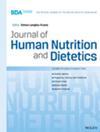Exploring Dietitians' Experience of Blended Tube Feed in Paediatric Inpatient Settings: National Cross-Sectional Survey, United Kingdom
Abstract
Background
Enteral tube feeding is used for children who are unable to meet their nutritional requirements orally. Gastrointestinal symptoms are some complications that can occur in enteral tube-fed patients. Blended tube feeds (BTFs) for children who are gastrotomy tube-fed have significantly increased in the last decade. BTF refers to homemade food that has been liquidised for enteral tube feeds. An increasing amount of evidence suggests that children on BTF have improved feed tolerance. It is unknown whether children admitted to a hospital established on a BTF can continue a BTF due to the potential barriers such as catering processes, staffing hours (limited to syringe bolus feeding) and food safety concerns. This national cross-sectional survey aimed to explore the use of BTF in a paediatric hospital setting.
Methods
This was a prospective, cross-sectional, practice-based survey of registered paediatric dietitians who work in an inpatient care setting to explore the use of BTF. The final survey consisted of 13 questions and took dietitians approximately 15 min to complete. The questions focused on the dietitian's experience, knowledge and confidence in children on a BTF.
Results
Across the United Kingdom, 51 hospitals completed the survey. Of these, 16 of 19 were specialist children's hospitals (79% response rate) and 35 of 89 were general paediatric hospitals (39% response rate). All responders were paediatric dietitians. 49 of 51 (96%) dietitians knew of the British Dietetic Association (BDA) Practice Toolkit for Blended diets. Dietitians were asked to estimate on average per month how many children were admitted on a BTF; 41% (21 of 51) of dietitians reported that on average there are one to five children admitted on a BTF. There was no significant difference in the number of children admitted on a BTF between a specialist and a general children's hospital (χ2 statistic = 4.96, p value < 0.08). The number of dietitians who had clinical guidelines to support children admitted on a BTF was 49% (25 of 51). Specialist children's hospitals were more likely to have a clinical guideline compared with a general hospital (χ2 statistic = 6.348, p value = 0.01). However, only 18 of 51 (35%) dietitians reported being confident or very confident to review a child on a BTF. The most common perceived benefit was that parents/carers could incorporate family foods into their child's diet. 26% reported that a varied diet was beneficial in relation to the gut microbiome. If a BTF was contraindicated for children admitted to a hospital (immunocompromised, post-pyloric feeding or intensive care), 49 of 51 (96%) dietitians reported they would use an enteral formula with food-derived ingredients (Compleat paediatric—Nestle Health Science) as an alternative to a BTF.
Conclusion
BTF continues to grow in popularity. Our survey reported that children on BTF are frequently admitted to the hospital. There is growing evidence to support BTF in relation to family psychosocial health and feed tolerance. Dietitians must keep abreast of this fast-evolving area practice to ensure that they are the experts in BTF. When a BTF is contraindicated, an enteral formula with food-derived ingredients is a suitable alternative. Issues such as microbial contamination, nutritional composition, and adequacy of diluted BTF need further exploration.

 求助内容:
求助内容: 应助结果提醒方式:
应助结果提醒方式:


